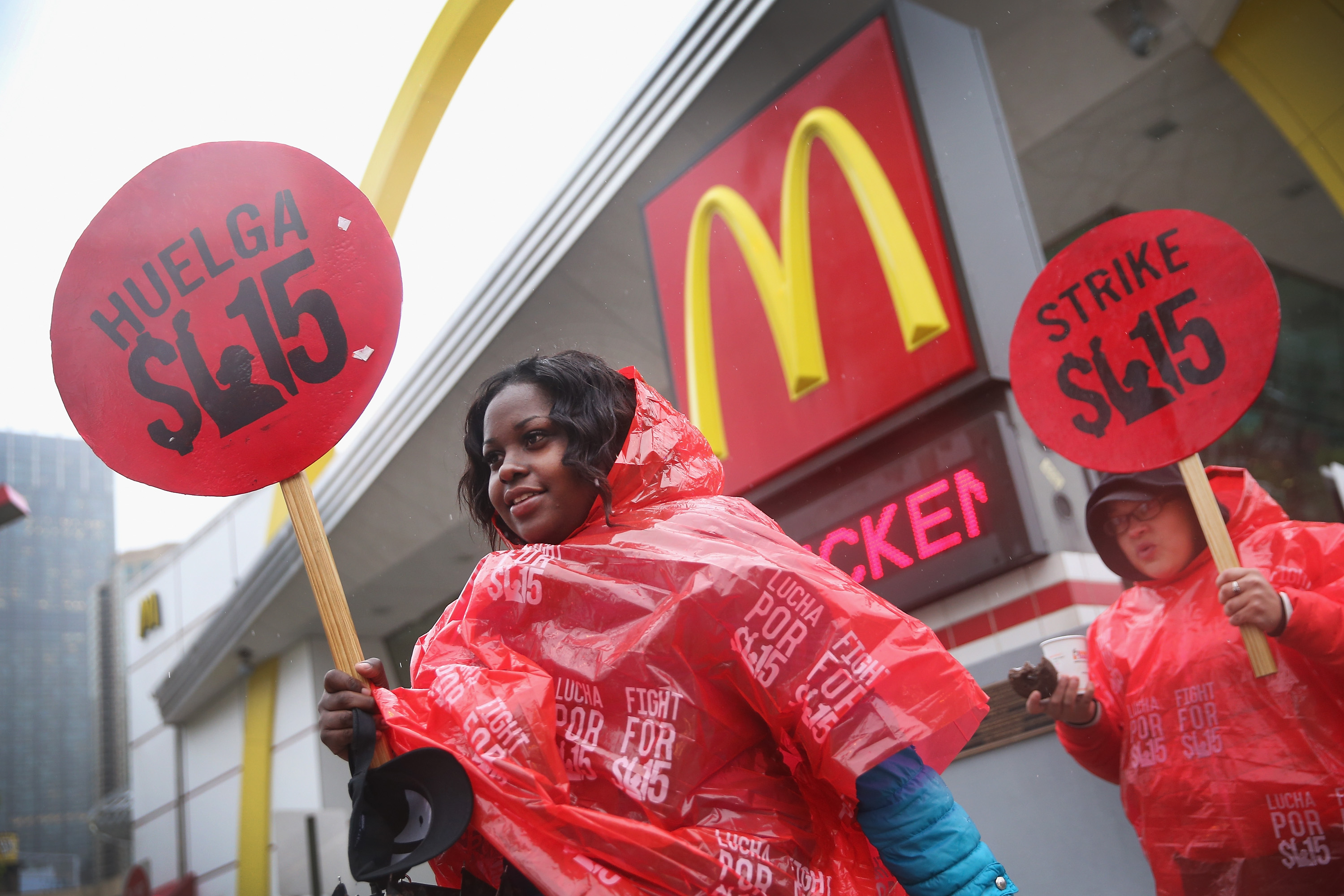How McDonald's puts the squeeze on both franchise owners and workers
- Select a language for the TTS:
- UK English Female
- UK English Male
- US English Female
- US English Male
- Australian Female
- Australian Male
- Language selected: (auto detect) - EN

Play all audios:

Late last week, the National Labor Relations Board issued a ruling that capped an ongoing struggle between franchises and organized labor in the fast food world.
The way franchising works in a nutshell is the you have the franchisor, which is the central company. That central company owns a certain amount of units — individual storefronts or
restaurants or whatnot. But then you also have the franchisee, who can separately own one or multiple units, and who pays a fee to the central company along with certain other obligations.
In exchange, the franchisee gets the benefit of the franchisor's brand, proven business model, advertising, etc. Fast food and hotel chains tend to be the biggest players in the franchise
world, though other services like car repair and janitorial work are also taking advantage of the franchise model in growing numbers.
Depending on how enmeshed the franchisor-franchisee relationship is, they can be termed a "joint employer." If they're a joint employer, then when their workers organize into unions, those
unions bargain with the central franchisor as well as the individual franchisees.
Escape your echo chamber. Get the facts behind the news, plus analysis from multiple perspectives.
Jeff Spross was the economics and business correspondent at TheWeek.com. He was previously a reporter at ThinkProgress.